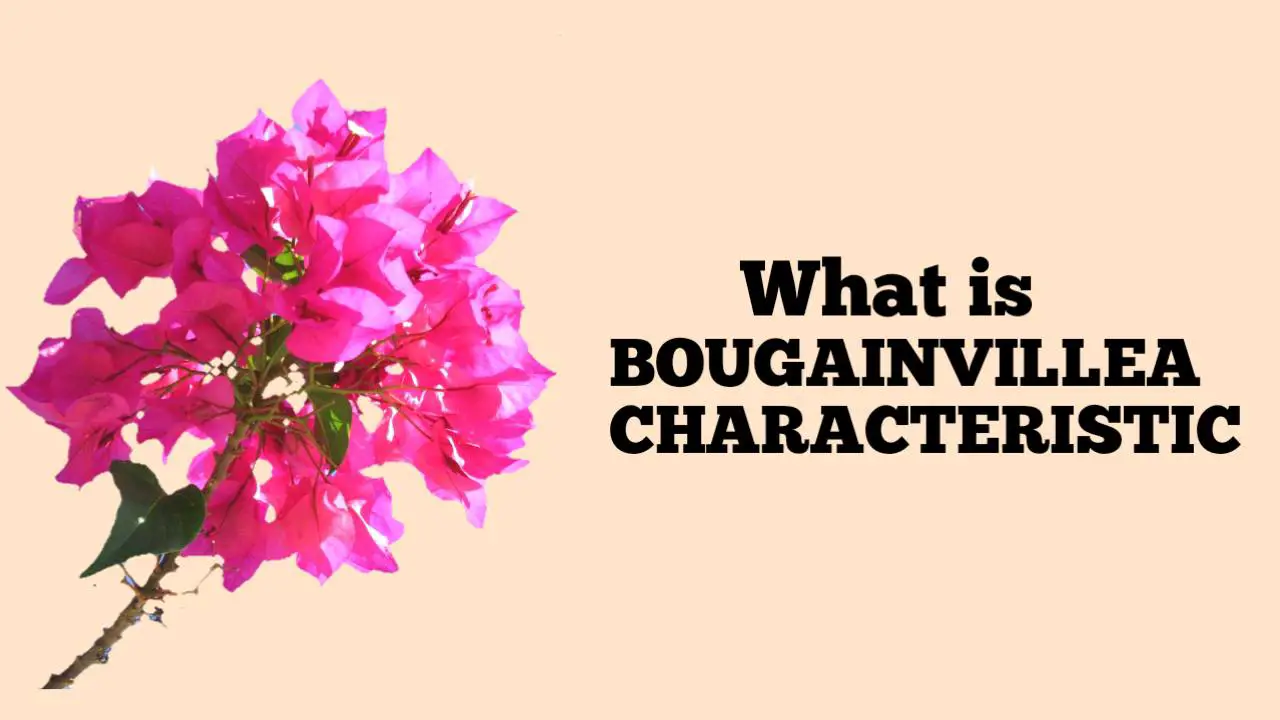The bougainvillea becomes popular in many locations in the world. This beautiful flower has different varieties. People buy bougainvilleas online for their collection. If you want to buy bougainvilleas then find a flower store near your location.
Bougainvillea Characteristics
It has a soft to the hard stem. It has small black seeds. It has beautiful flowers with different kinds of colors depending on its varieties. And also it has small smooth leaves.
Bougainvillea is a perennial plant that can grow up to 30 feet in height, although it is often trained to grow as a shrub or a vine. Its leaves are oval-shaped, and they can be green or variegated.
The flowers are small and white, but what gives the plant its vibrant color are the three bracts that surround each flower. These bracts can be pink, red, yellow, orange, purple, or white, and they come in a variety of shades and patterns.
Bougainvillea typically blooms from late spring to early fall, although it can bloom year-round in tropical climates.
Bougainvillea Flower Characteristics
Bougainvillea flowers are small and white, but what gives the plant its vibrant color are the three bracts that surround each flower. These bracts are actually modified leaves that are brightly colored, while the flowers themselves are small and inconspicuous.
The bracts can come in a variety of shades, including pink, red, orange, purple, and white, and they may have variegated patterns or multiple colors on a single plant.
Bougainvillea flowers typically bloom from late spring to early fall, although some varieties may bloom year-round in tropical climates. The plant’s flowers and bracts are generally long-lasting and can remain on the plant for several weeks or even months, depending on growing conditions.
Bougainvillea Leaf Characteristics
Bougainvillea leaves are typically ovate or elliptical in shape and have a smooth texture. The leaves are usually small, ranging from 4-13 cm in length, and they may be green or variegated in color.
Some varieties of bougainvillea have leaves that are tinged with red or bronze, which can add to the plant’s visual appeal. Bougainvillea leaves grow in an alternating pattern along the stems of the plant, and they are often used as a backdrop for the plant’s colorful bracts.
The leaves are also important for the plant’s growth and development, as they perform photosynthesis to produce energy for the plant.
However, bougainvillea leaves are not the main feature of the plant, and they are often overshadowed by the brightly colored bracts that surround the plant’s small flowers.
Bougainvillea leaf arrangement
Bougainvillea leaves are arranged alternately along the stem of the plant. This means that each leaf emerges from the stem at a different point and does not directly overlap with the leaf above or below it.
This alternate leaf arrangement allows the plant to efficiently capture sunlight and perform photosynthesis, as each leaf is able to receive light from different angles. Additionally, the alternate leaf arrangement creates an attractive, symmetrical pattern along the stem, which can add to the plant’s visual appeal.
While the leaves of bougainvillea are not the main feature of the plant, their arrangement plays an important role in the plant’s growth and development.
Bougainvillea Glabra Characteristics
Bougainvillea glabra is a species of bougainvillea that is known for its unique characteristics. Some of the key features of Bougainvillea glabra include:
- Appearance: Bougainvillea glabra is a climbing, woody vine that can grow up to 30 feet in height. Its leaves are ovate and slightly wavy, and they have a smooth texture.
- Growth habit: Bougainvillea glabra has a fast growth rate and can quickly cover walls, trellises, and other structures. It is also easy to propagate from cuttings, making it a popular plant for landscaping and gardening.
- Pests and diseases: Bougainvillea glabra is relatively resistant to pests and diseases, although it can be susceptible to root rot if it is over-watered.
- Uses: Bougainvillea glabra is primarily grown for ornamental purposes, as its brightly colored bracts add a splash of color to any landscape. It is often used as a climbing vine to cover walls and fences, or as a container plant for patios and balconies. In some cultures, the plant is also used for medicinal purposes, as it has been shown to have anti-inflammatory and antibacterial properties.
Bougainvillea Uses
Bougainvillea is a versatile plant that has a variety of uses in landscaping, gardening, and traditional medicine. Its vibrant, colorful bracts make it a popular choice for adding a splash of color to gardens, patios, and balconies.
Bougainvillea can be grown as a shrub, a vine, or a small tree, and it can be trained to grow up walls, over trellises, or around pergolas. Its fast growth rate, drought tolerance, and low maintenance requirements make it an ideal plant for those who want a stunning garden without too much upkeep.
Bougainvillea is also a popular choice for commercial landscaping, as it can add a tropical touch to shopping centers, resorts, and other public spaces.
In addition to its aesthetic uses, bougainvillea has also been used for centuries in traditional medicine. The plant has anti-inflammatory and antibacterial properties, and it has been used to treat a variety of ailments, including respiratory infections, fever, and digestive problems.
Bougainvillea is also believed to have diuretic properties, which can help to eliminate excess fluids from the body.
While more research is needed to fully understand the medicinal properties of bougainvillea, it is clear that this plant has a long history of use in traditional medicine and continues to be valued for its potential health benefits.

